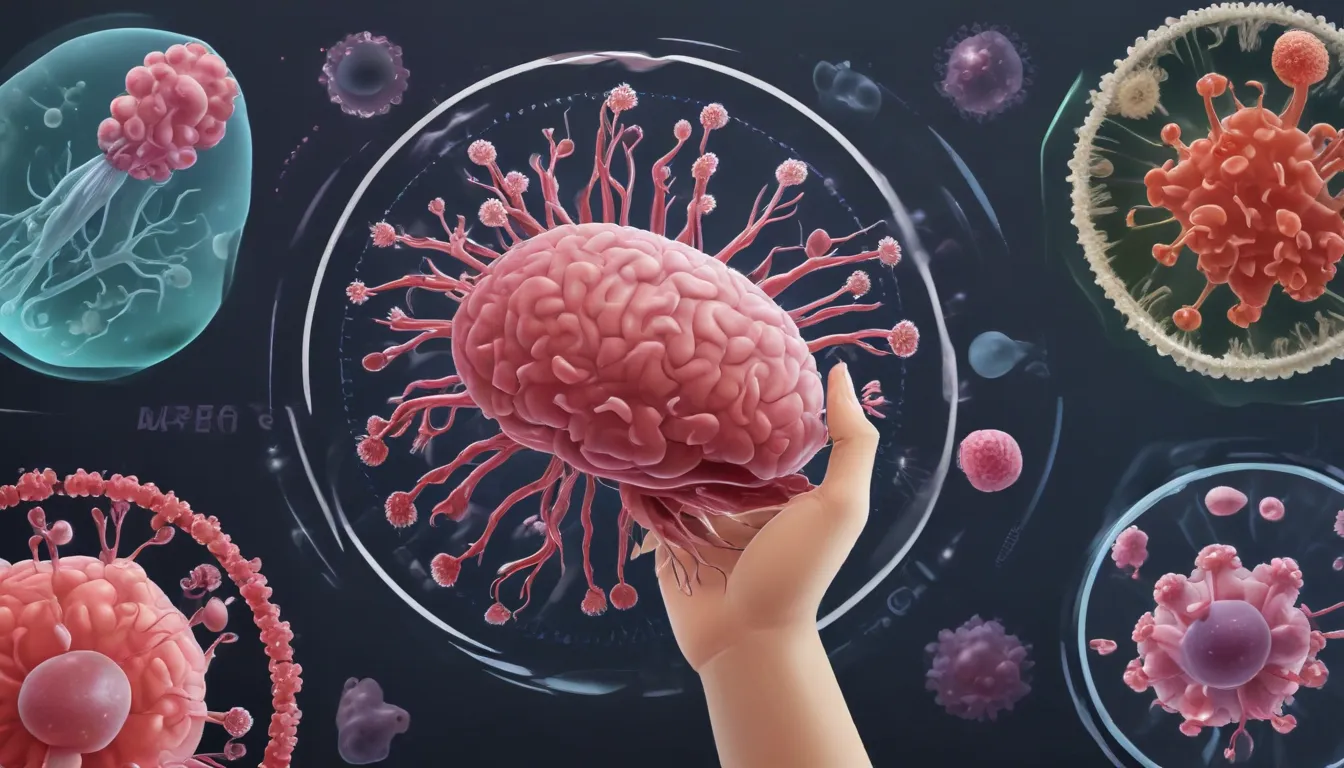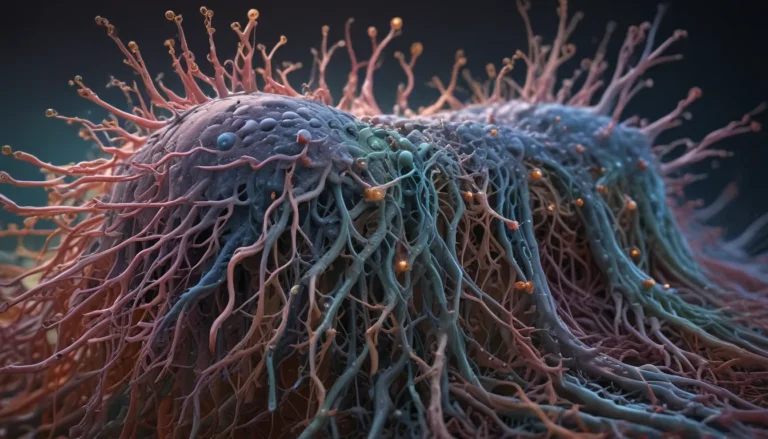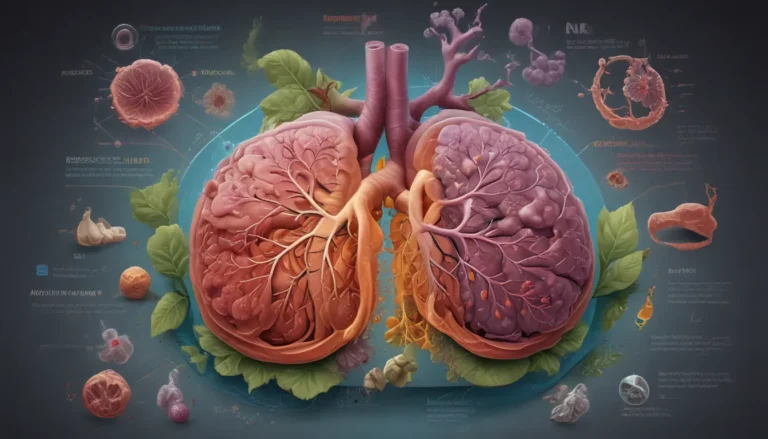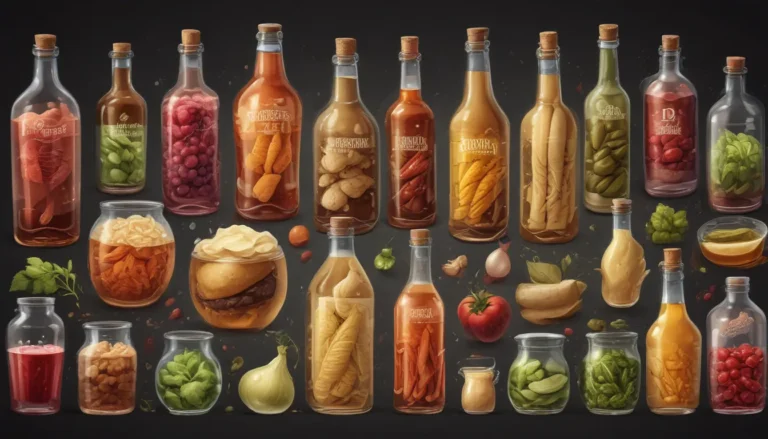A Note About Images: The images used in our articles are for illustration purposes only and may not exactly match the content. They are meant to engage readers, but the text should be relied upon for accurate information.
In the realm of biology and public health, the rise of antimicrobial resistance is a growing concern. Microbes, including bacteria and viruses, are evolving and adapting, becoming more resistant to treatments designed to combat them. This phenomenon poses a significant threat to human and animal health, emphasizing the crucial need to comprehend the complexities of microbial resistance.
Key Takeaways:
- Microbes are becoming stronger against antibiotics, reducing treatment effectiveness. Overuse of antibiotics and lack of new drugs worsen the situation. Immediate action is necessary to safeguard our health.
- Responsible antibiotic use, development of new treatments, and collaboration are essential in combating microbial resistance. It is a daunting challenge, but proactive measures can make a difference.
the Global Challenge of Antibiotic Resistance
The term microbial resistance denotes the ability of microorganisms to withstand the effects of antibiotics or other antimicrobial substances. This phenomenon has emerged as a major public health concern globally, undermining the efficacy of medical treatments and increasing the risk of infections spreading.
Evolution of Resistance Mechanisms
Microorganisms possess the capacity to mutate and develop resistance to antibiotics. Through genetic changes, they acquire new traits that enable them to survive and replicate despite the presence of antimicrobial drugs.
Factors Contributing to Resistance
Overuse and misuse of antibiotics in both humans and animals play a significant role in the development of microbial resistance. Unnecessary prescriptions, incomplete courses of antibiotics, and their use in animal agriculture contribute to this concerning trend.
Transmission of Resistance
Microbes have the ability to transfer genetic material containing resistance genes to other bacteria through processes like conjugation, transduction, and transformation. This horizontal gene transfer accelerates the spread of resistance within bacterial populations.
Impact of Resistance
As microorganisms evolve and develop resistance mechanisms, the efficacy of antibiotics diminishes over time. Constant development of new drugs is essential to counter emerging strains of resistant bacteria.
Diverse Environments
Resistance is not confined to healthcare settings; microbes can develop resistance in community settings, food production systems, and natural environments such as soil and water.
Strategies to Overcome Resistance
In some cases, using multiple antibiotics in combination can be more effective than single-drug treatments. This approach targets multiple aspects of microbial survival, reducing the likelihood of resistance development.
Role of Efflux Pumps
Efflux pumps, membrane proteins that actively remove antibiotics from microbial cells, diminish their effectiveness. These pumps are a significant factor in multidrug resistance.
Challenges in Treatment
When a microbe becomes resistant to multiple antibiotics, treatment options become limited. Infections caused by drug-resistant organisms can lead to prolonged illness, higher mortality rates, and increased healthcare costs.
Cross-Resistance Phenomenon
Microorganisms can develop resistance to one antibiotic and subsequently become resistant to other drugs with similar structures or modes of action. Cross-resistance poses additional challenges in treating resistant infections.
One Health Approach
Microbial resistance does not solely affect human health but also impacts animal health and agriculture. The use of antibiotics in veterinary medicine contributes to the development and spread of resistant bacteria.
Financial Implications
Managing drug-resistant infections necessitates more complex and costly treatments, imposing a financial burden on healthcare systems and individuals. This includes longer hospital stays, expensive drugs, and specialized care.
Role of Rapid Diagnostic Tests
Timely and accurate diagnosis of infections, along with identifying specific resistance patterns, aids clinicians in prescribing effective treatments and avoiding unnecessary use of broad-spectrum antibiotics.
Need for New Antibiotics
Continued research and development play a critical role in combating microbial resistance. Discovering novel antibiotics and alternative treatments is crucial to stay ahead of evolving resistant strains.
Comprehensive Prevention Strategies
Implementing a comprehensive approach encompassing infection prevention measures, responsible antibiotic use, vaccination, and public awareness campaigns can mitigate the spread and development of microbial resistance.
Natural Evolutionary Process
Microbial resistance is a natural biological phenomenon as microbes adapt and evolve. Human activities have accelerated this process, leading to widespread resistance.
Importance of Antimicrobial Stewardship
Promoting responsible antibiotic use ensures their effectiveness and curbs the development of resistance. Optimizing prescribing practices, patient education, and monitoring antibiotic use are crucial in antimicrobial stewardship.
Global Impact of Resistant Infections
Drug-resistant infections cause millions of illnesses and deaths worldwide annually. Vulnerable populations like newborns, elderly individuals, and those with compromised immune systems are particularly affected.
Surveillance Systems
Surveillance programs monitor the occurrence and spread of resistant bacteria. This data enables healthcare professionals and policymakers to implement targeted interventions and strategies to combat resistance effectively.
Collaborative Efforts
Addressing microbial resistance necessitates a collaborative approach involving healthcare providers, researchers, policymakers, and the public. Working together, effective strategies can be implemented to preserve the effectiveness of antimicrobial treatments.
Conclusion
In conclusion, microbial resistance is a complex and pressing global issue that affects various facets of our lives. Understanding the intriguing facts surrounding microbial resistance is vital for effectively addressing this challenge. From the alarming rates of antibiotic resistance to the role of efflux pumps and cross-resistance, these facts illuminate the mechanisms and consequences of microbial resistance. Moreover, the importance of antimicrobial stewardship and rapid diagnostic tests in combatting resistance cannot be overstated.
FAQs
-
What is microbial resistance?
Microbial resistance refers to the ability of microorganisms to withstand the effects of antimicrobial drugs previously used to treat infections. -
Why is microbial resistance a concern?
Microbial resistance poses a significant threat to human health as it reduces the effectiveness of antibiotics and other antimicrobial drugs, leading to prolonged illnesses, increased healthcare costs, and higher mortality rates. -
How does microbial resistance develop?
Microbial resistance develops through various mechanisms, including genetic mutations, acquisition of resistance genes, and microorganisms’ ability to adapt and survive in the presence of drugs. -
What are the main factors contributing to microbial resistance?
The misuse and overuse of antimicrobial drugs in human healthcare and animal agriculture are significant contributors to the development and spread of resistance. -
Can microbial resistance be prevented?
While eradication is unlikely, microbial resistance can be slowed or prevented through responsible antibiotic use, improved infection prevention, and the development of new drugs.
In conclusion, the battle against microbial resistance requires a comprehensive and collaborative effort to safeguard human and animal health. By understanding the mechanisms of resistance and implementing responsible practices, we can slow down the spread of resistance and ensure the effectiveness of antimicrobial treatments for future generations. Let’s join hands in this global endeavor to combat microbial resistance and protect the well-being of all.






